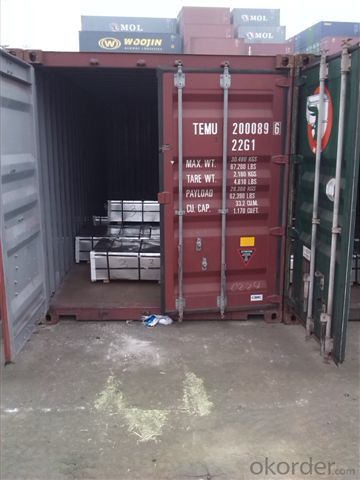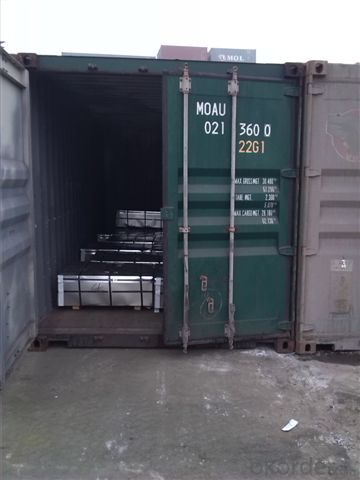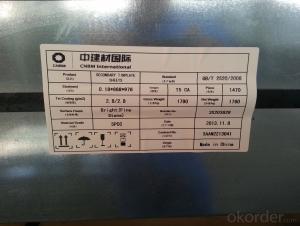Tinplate in SPCC/MR Grade for Paint Cans
- Loading Port:
- China main port
- Payment Terms:
- TT OR LC
- Min Order Qty:
- 25 m.t.
- Supply Capability:
- 30000 m.t./month
OKorder Service Pledge
OKorder Financial Service
You Might Also Like
1. Products: Tinplate
Tinplate and TFS are widely used for making all types of containers such as artistic cans, tea cans, painting cans, chemical package cans and metal printing etc. Its applications are not limited to containers; recently, they have also been used for making electrical machinery parts and many other products.
2. Specification:
Our goods enjoyed high quality both at home and abroad. We can supply tin free steel as follows:
Technical standard | JISG3303 and GB/T 2520-2008 |
Steel Type | MR / SPCC |
Thickness | From 0.15mm to 0.50mm (Tolerance +/- 0.01mm) |
Width | Normally 600-1050mm (Tolerance +3/-0 mm) |
Coating | 2.8/2.8g/m2 , 2.8/5.6g/m2 ,1.1/1.1 g/m2 |
Temper & Annealing | T1-T5, DR7-8, TS230-TH435, T49-T65(+/- 4) |
Surface Treatment | Bright & Fine Stone & Stone & Silver & Matt |
Payment terms | Letter of Credit (L/C), Telegraphic transfer (T/T) |
Price terms | CFR & CIF price term |
Delivery time | Within 60 days after received L/C or T/T down payment |
Packing | High quality shipping packing which contains thin plastic film, rust-proof paper, metal cover, metal angles and strap sand pallet. |
Minimum order Quantity(MOQ) | 25 metric tons (1X 20'' container) |
3. Pictures:


4. Features of the factory price/ tin free steel/tinplate/tfs/tmbp/etp/spte:
Beautiful Appearance
Excellent Paintability & Printability
Excellent Formability & Strength
Excellent Corrosion Resistance
Excellent Solderability & Weldability
5. FAQ:
We are one of the main producers in China for tinplate, tin free steel and also TMBP. At present, our productivity is more than 450000 MT/year.
For more information about our products or company, pls contact us freely.
Welcome your enquiries and orders.
- Q:What are the main challenges in the recycling of tinplate?
- One of the main challenges in the recycling of tinplate is the separation of tin from the steel. Tin is a valuable material and it is important to recover as much of it as possible during the recycling process. However, separating tin from steel can be a complex and energy-intensive process. Additionally, contaminants such as paints, coatings, and other metals need to be removed before the tinplate can be recycled, which adds to the difficulty of the recycling process. Another challenge is the collection and sorting of tinplate waste, as it often ends up mixed with other materials in municipal waste streams. This makes it necessary to implement effective collection and sorting systems to ensure that tinplate is properly recycled.
- Q:Can tinplate be welded?
- Yes, tinplate can be welded using specialized welding techniques such as spot welding or resistance welding.
- Q:Can tinplate be used for packaging of non-food products?
- Yes, tinplate can be used for packaging of non-food products. Tinplate is a versatile material that offers excellent protection against moisture, light, and oxygen, making it suitable for various non-food items such as cosmetics, chemicals, and pharmaceuticals. Its durability and recyclability further make it a popular choice for packaging non-food products.
- Q:How does tinplate perform in terms of lightness and portability?
- Tinplate performs exceptionally well in terms of lightness and portability. It is a lightweight material that allows for easy handling and transportation, making it highly suitable for various applications requiring mobility.
- Q:What is the shelf life of products packaged in tinplate?
- The shelf life of products packaged in tinplate can vary depending on various factors such as the type of product, packaging conditions, and storage conditions. However, tinplate is known for its excellent barrier properties and resistance to corrosion, which can help extend the shelf life of products. In general, products packaged in tinplate can have a relatively long shelf life ranging from several months to a few years.
- Q:What are the applications of tinplate?
- Tinplate is commonly used in various applications due to its unique properties. It is primarily used in the packaging industry for food and beverage containers, as tin coating provides excellent protection against corrosion and ensures product safety. Tinplate is also utilized in the manufacturing of aerosol cans, paint containers, and metal closures. Its versatility extends to the automotive industry, where it is employed for making fuel tanks, oil filters, and various automotive components. Additionally, tinplate finds applications in the construction sector for roofing, ductwork, and HVAC systems.
- Q:How does tinplate perform in terms of UV resistance?
- Tinplate has limited UV resistance and is not inherently UV stable. However, it can be coated or painted with UV-resistant materials to enhance its resistance to UV radiation.
- Q:Is tinplate safe for contact with skin?
- Yes, tinplate is generally considered safe for contact with skin. It is commonly used in various products, such as jewelry, cosmetics, and packaging, without causing any significant harm or irritation to the skin. However, some individuals may have specific allergies or sensitivities to tin, so it is always advisable to check for any potential reactions before prolonged or extensive contact.
- Q:How does tinplate packaging contribute to product stability during transportation?
- Tinplate packaging contributes to product stability during transportation by providing a strong and durable barrier that protects the product from external factors such as moisture, light, and physical impact. Its rigid structure helps prevent deformation or crushing, ensuring the integrity of the product. Additionally, tinplate's excellent corrosion resistance properties safeguard against any potential damage caused by exposure to air or moisture. Overall, tinplate packaging plays a crucial role in maintaining the stability and quality of the product throughout the transportation process.
- Q:What are the disadvantages of using tinplate?
- One disadvantage of using tinplate is its relatively high cost compared to other materials. Additionally, tinplate can be prone to corrosion if not properly coated or maintained. It is also less flexible than some alternative materials, making it less suitable for certain applications. Lastly, tinplate can be challenging to recycle due to the complexity of separating the tin coating from the steel, which can contribute to environmental concerns.
1. Manufacturer Overview |
|
|---|---|
| Location | |
| Year Established | |
| Annual Output Value | |
| Main Markets | |
| Company Certifications | |
2. Manufacturer Certificates |
|
|---|---|
| a) Certification Name | |
| Range | |
| Reference | |
| Validity Period | |
3. Manufacturer Capability |
|
|---|---|
| a)Trade Capacity | |
| Nearest Port | |
| Export Percentage | |
| No.of Employees in Trade Department | |
| Language Spoken: | |
| b)Factory Information | |
| Factory Size: | |
| No. of Production Lines | |
| Contract Manufacturing | |
| Product Price Range | |
Send your message to us
Tinplate in SPCC/MR Grade for Paint Cans
- Loading Port:
- China main port
- Payment Terms:
- TT OR LC
- Min Order Qty:
- 25 m.t.
- Supply Capability:
- 30000 m.t./month
OKorder Service Pledge
OKorder Financial Service
Similar products
New products
Hot products
Hot Searches
Related keywords


























